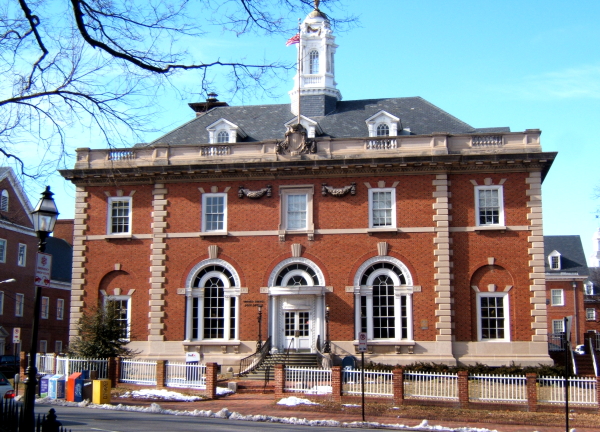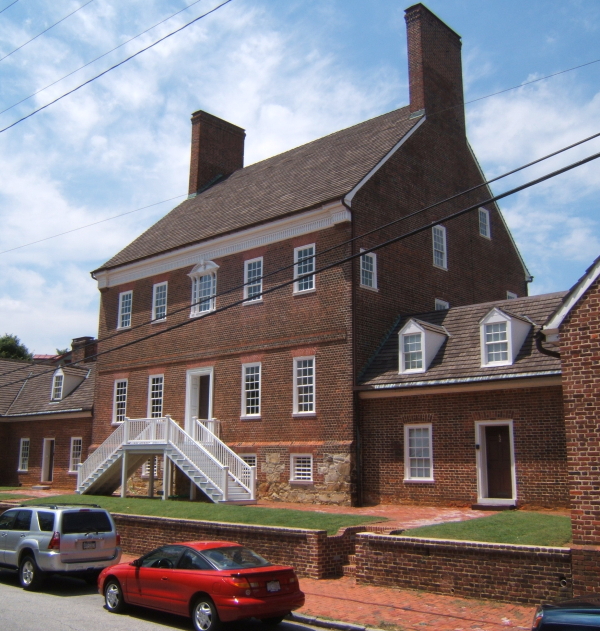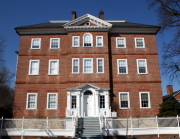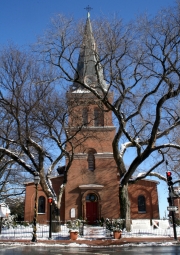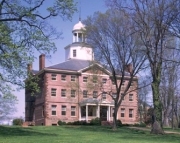Annapolis Architecture GuideAnnapolis
has four salient features that make her exceptional among all other
American towns. 1) The Baroque street plan designed by Colonial Governor
Francis Nicholson in 1694 is unique. 2) The collection of unaltered grand
eighteenth century buildings exceeds all other cities including
Williamsburg Virginia. 3) The scale of the town is intimate and personal
while it simultaneously strives for monumentality. 4) The town has been
continuously occupied for over 300 years. Annapolis
was founded (built from scratch) in 1695 as the capitol of the Maryland
Colony and designated an exclusive port of shipping and collection of the
strict taxation of tobacco. Its “golden period” as the social and
political center occurred from 1750 thru 1778, when the town was briefly
the capitol of the new nation, and George Washington resigned his
commission from the army and returned to private life, and to become the
first president. Annapolis was home to some of the wealthiest families of
the Colonies, and four signers of the Declaration of independence. It
became eclipsed by Baltimore by 1800, but sustained itself by being the
capital of the State, a center of Chesapeake Bay fisheries, home of St.
John’s College, and in 1854 home of the U. S. Naval Academy. Because of
the lack of economic development, there was little pressure to demolish or
“improve” existing buildings. The “re-discovery” of Annapolis in
the 1970s fortunately coincided with the emergence of the historic
preservation movement. Annapolis is now a treasure trove of American
architecture, with important 18th, 19th and 20th
century buildings. In a 10 minute walk, one can see 7 grand mansions of
the 1770’s, excellent examples from each decade of the 1800’s;
Federal, Italianate, Queen Anne, Shavian, and second empire Victorian;
buildings from the 20th century includes the American Beaux
Arts Naval Academy by Earnest Flagg, mid century modernist Richard Neutra,
sensitive and subtle contextual infill buildings and progressive
restoration projects. Annapolis offers a decade by decade lesson in
architectural history, from the early 1700’s to the early 2000’s. Our
Annapolis Architectural Guide describes the important buildings and how
they fit into the history of American Architecture. Our
map is a useful tool to navigate a sometime confusing town sometimes hard
to navigate. Our suggested walking tours suggest ways to see these
important buildings within the context of the extraordinary Baroque town
plan. We
welcome your comments, suggestions, additional histories, and historical
photographs. Please contact us at Jessica@BohlArchitects.com. |
|
||

